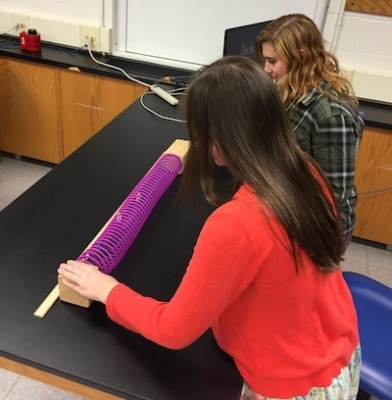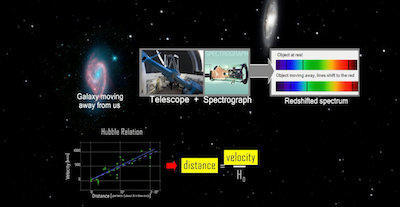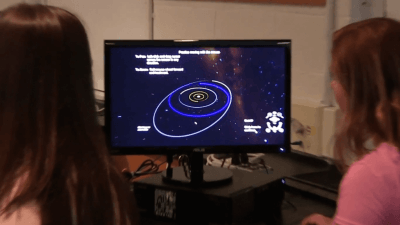The WWT Ambassadors and faculty and staff at Bucknell University have developed a hybrid lab involving both hands-on and virtual activities that focuses on the Hubble Law, expansion of the universe, and large scale structure. This lab, designed for non-science undergraduates in an introductory astronomy class, combines investigation with tactile models in a laboratory environment with analysis of real astronomical data, and detailed visualization using astronomy visualization software. Students are therefore able to both explore the universe on its largest scales and develop physical intuition for its geometry and dynamics.
|
But what is WorldWide Telescope? WorldWide Telescope (WWT) is a free computer program that enables students to explore the universe in incredible detail. WWT compiles the best imagery from telescopes all over the world into rich 2-D and 3-D maps of the sky, across the whole electromagnetic spectrum. Students can manipulate and interact with the program, visualizing almost everything we know about the universe in ways they never could before. One student declared WWT: “Cooler than Call of Duty!”
How do I run the WWT tours?
|
What’s in this lab?
|
WorldWide Telescope is a free, open source program of the American Astronomical Society, originally developed by Microsoft Research. These materials were developed by Bucknell University and the WWT Ambassadors Program at Harvard University with support from NSF grant DUE-1140440.



